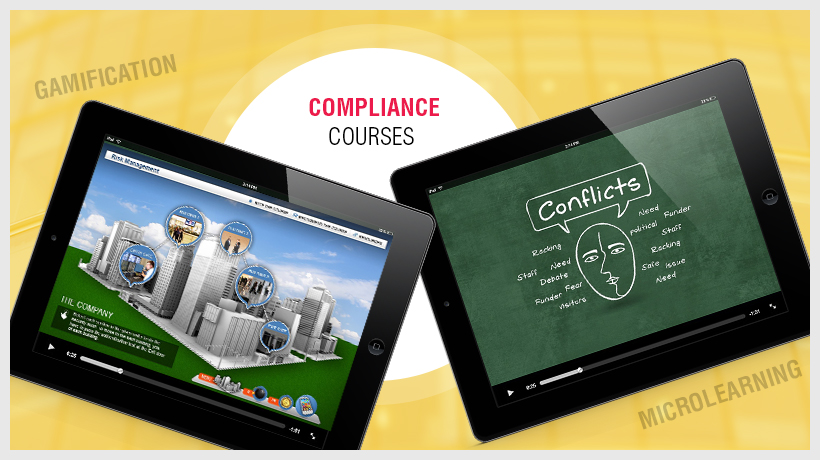
Employees have increasingly become willing to entertain and act on job opportunities beyond what their current job offers.
And organizations unwilling to be flexible, retain unskilled or bad leadership, and fail to invest in employee career development, are facing high rates of turnover and dissatisfaction.
To successfully retain talent, give employees the autonomy and flexibility they are asking for, and improve overall employee experience, organizations need to effectively leverage L&D.
So, what are the critical factors that organizations must focus on to improve employee experience? And how can you successfully leverage L&D to improve employee experience and help your learners grow?
In this article, we will examine the critical role played by L&D teams in improving employee experience within your organization.
Read this article to learn:
Why Must You Focus on Employee Experience?
Employers have entered a new era where employees have become willing to entertain and act on job opportunities beyond what their current job offers at unprecedented rates. It’s become clear that organizations unwilling to be flexible, retain unskilled or bad leadership, and fail to invest in employee career development are hemorrhaging key talent.
Additionally, there is a previously untapped pool of talent made up of caregivers responsible for caring for children, disabled spouses, and aging parents. This group of potential employees requires flexibility on where and when they work but can provide significantly valuable talent for many organizations.
Finally, many employees have opted for opportunities available in the gig economy, preferring to work on a project-to-project basis for pay rather than in a full-time commitment. Many of them are part of the aging or retired generation who have built up valuable tacit knowledge and skills but are no longer interested in traditional 8-5 jobs.
Organizations who are willing to be flexible with work schedules and locations, encourage and promote effective leadership, and invest in their employees’ career development are garnering their industry’s top talent. Employees are seeking companies that provide autonomy and flexibility – organizations that value the quality and quantity of output rather than seat time. Organizations focusing on improving the employee experience will be more competitive in the long run than those who don’t.
What Is the Role of L&D in Improving Employee Experience?
Employers cannot control what other companies do – what they offer as compensation and benefits – but they can control what they offer. Once employees feel they’re fairly compensated, organizational learning is one of the next most important factors in retaining talent and improving the employee experience.
An effective L&D team is a small investment compared to high turnover and lost talent, and L&D is something an organization can invest in with comparably significant returns on investment. Career development, including learning and development opportunities, amplifies employee performance and increases a firm’s global competency.
What Are the Critical Factors that L&D Must Focus on to Improve Employee Experience?
There are a few areas that L&D teams should focus on to improve the employee experience, including:
- The adoption of a learner-centered design approach. Most L&D teams are great at describing tools and processes, and LMSs contain endless training hours describing company rules and compliance regulations. They should first answer the question: What is most important facet for this employee’s success, and what is the most effective way to consume this training?
- Building emotional intelligence into learning programs. It’s an understatement to say that employees with the highest emotional intelligence are the most successful. L&D teams must have the ability to recognize, understand, feel, and influence emotions and core drives of diverse and distributed learners to help build a culture of lifelong learning. Hence, trainings with the most increased emotional intelligence are also the most successful.
How Do You Leverage L&D to Improve Employee Experience and Help Your Learners Thrive in Your Organization?
Below are six concepts to keep in mind when using L&D to improve employee experience, helping learners thrive:
- Create learning programs that appeal to learners’ core values. Ask the question: What do these learners value? What is required to be successful today and tomorrow? Some are looking to the future, seeking leading-edge trends. Build learning programs that fill those needs.
- Understand and integrate learner needs and expectations. That analysis can lead to a library of learner personas, informing future L&D projects to improve the employee experience.
- Make learning programs accessible to all. Be especially aware of the needs of those who are visually impaired, experience learning disabilities like dyslexia, and may have hearing impairments. Flexibility and options are critical for this concept. Employ practices that include highly visual training, closed captions, and audio options.
- Create more opportunities to learn. Effective organizations integrate learning into the everyday part of work. Without building those into the normal flow of work, employees will fall behind industry leaders – and the company will quickly follow.
- Empower employees to perform better through learning interventions. Work demands are increasing, and so should learning opportunities.
- Personalize learning paths mapped to individual learners’ career growth paths. Most LMSs nowadays include features allowing managers and employees to build personalized learning paths that lead to the desired career growth.
Parting Thoughts
Organizations can use learning and development to improve the employee experience. Employees are more than willing than ever to change jobs – seeking increased pay, flexible work situations, and career advancement. I hope the concepts explained in this article provide the requisite insights to improve your employee experience.
Read More
- Prove and Improve – How to Measure and Demonstrate the Impact of Your Training Programs
- How to Drive Employee Motivation and Performance with Training
- How to Get Your Employees to Learn Faster and Improve Learning Retention
- How to Design Learning Programs that Drive Employee Skill Development
- How to Drive Rapid Upskilling and Reskilling Effectively at Scale



